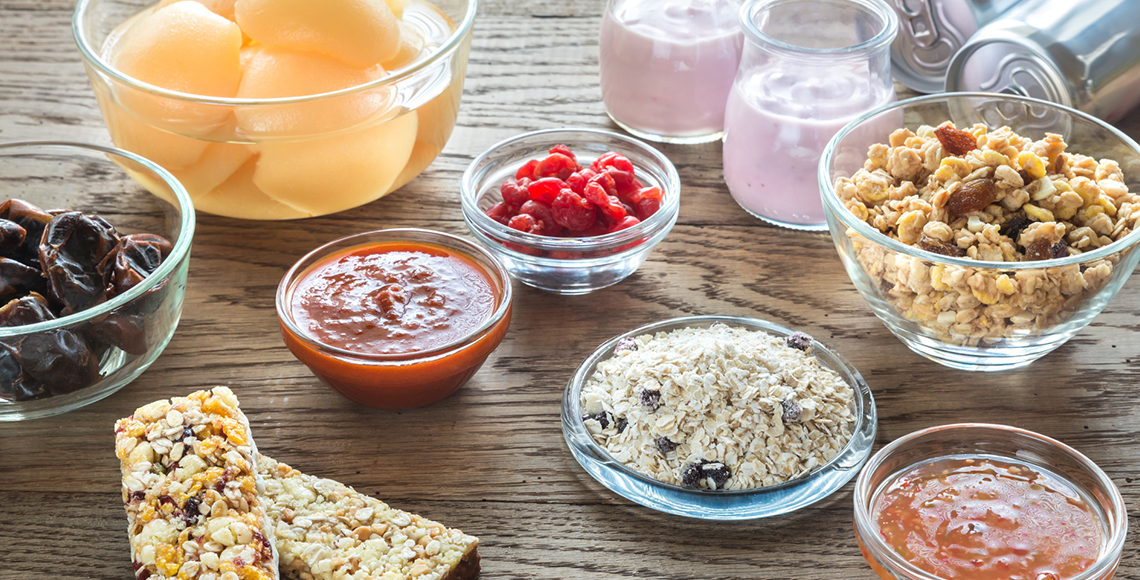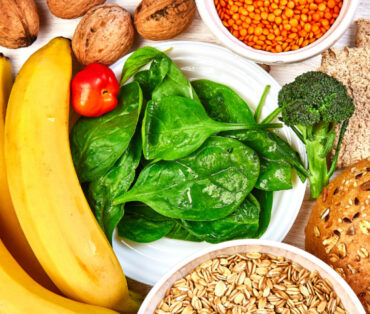Steer Clear of Hidden Sugar—Foods to Avoid for Better Health
In a world full of processed foods, following a healthy diet can be hard. Many foods advertised as being good for you are unhealthy foods in healthy food clothing. The secret to avoiding processed and sugary foods is to educate yourself on what you’re getting. Knowing how to read a food label and identify foods with added sugar is important to following a healthful eating plan, especially if you have diabetes, high blood sugar, heart disease and/or are trying to lose weight.
Are you eating more sugar than you realize?
Chances are the answer is “yes.” According to the American Heart Association (AHA), the average American eats 17 teaspoons of added sugars per day. The AHA recommends women limit their daily sugar intake to no more than 6 teaspoons (0.8 ounces or the equivalent of 100 calories), and men consume no more than 9 teaspoons (1.3 ounces or the equivalent of 150 calories) per day. 1
Why are we eating so much sugar? There are lots of foods with hidden sugar, including many items we wouldn’t suspect to be sugary foods. You may think you are eating a healthy diet and still be eating too much added sugar. Sugars we aren’t aware of in foods are known as hidden sugars. Food companies want the sugar in their foods to remain hidden, so consumers think they are eating healthfully and getting food that tastes good (thanks to the added sugar!) at the same time. The key to cutting down on the sugar you eat and recognizing which foods to avoid with diabetes is to know how to identify hidden sugar so you can get closer to your health goals.
Health risks associated with eating too much sugar
It may taste good, but added sugar in foods can act like a poison, increasing your risk for lots of diseases and conditions. Having a high intake of sugar per day can cause obesity, heart disease, high blood sugar, and diabetes. Excess sugar can also cause inflammation, which can get in the way of your full body workout routine. Consuming foods and drinks with added sugar can also stimulate hunger, leading to further weight gain.
How food companies sell foods with hidden sugar
Most of us know to look for the word “sugar” on an ingredients label. But sugar has lots of aliases food companies love to use. One trick they employ is to list smaller amounts of three or four different types of sugar, so the word “sugar” doesn’t appear as the main ingredient on the list even though it is. Other tactics include using “healthy” sugars rather than sucrose and combining added sugars and natural sugars in the same product. But all sugar behaves as sugar in your body at the end of the day, so it’s the TOTAL amount of different sugars in food that matters. Some of the other names for sugar include:
- Syrup
- High fructose corn syrup
- Maltose
- Sucrose
- Agave nectar
- Fruit juice concentrate
- Molasses
- Honey
- Corn syrup
- Rice syrup
- Glucose
- Fructose
- There are many additional names for sugar, these are just a few.2
Common foods that contain hidden sugars
Some sugary foods are not products you would suspect. Here are some common foods with hidden sugar:
- Breakfast cereals. Even the cereals that say “whole grain” or “fortified” can be loaded with sugar and therefore foods to avoid. Granola can be a sugary food, too, so choose a cereal with no more than 0.3 to 0.4 ounces of sugar per serving.
- Low-fat yogurt. To make up for the lower fat in yogurt, some manufacturers will use added sugar. Instead of fruit-flavored yogurt, buy plain yogurt and top it with fresh fruit yourself.
- Spaghetti sauce. Some popular brands of spaghetti sauce contain hidden sugar. Always check the nutrition label for the number of sugar grams.
- Salad dressing: Some salad dressings, particularly Catalina, French, ranch, and sweet and sour dressings, contain as much sugar as chocolate syrup.3
- Sugary beverages: Sodas, fruit juice, sweet tea, and even sports drinks contain high amounts of sugar. Cutting out sugar-sweetened drinks is one of the easiest ways to cut sugar out of your diet.4
Curves Nutrition and Weight Management Program
If you want to eat healthier and cut back on the amount of sugar you are consuming as part of your weight loss plan, or if you are watching foods to avoid with diabetes, the Curves Nutrition and Weight Management Program can help. The program will give you eating tips that will help put you on the right path for your weight loss journey and give you the energy you need to maximize your workout at Curves.
For more information on Curves, check out www.curves.com
Sources:








